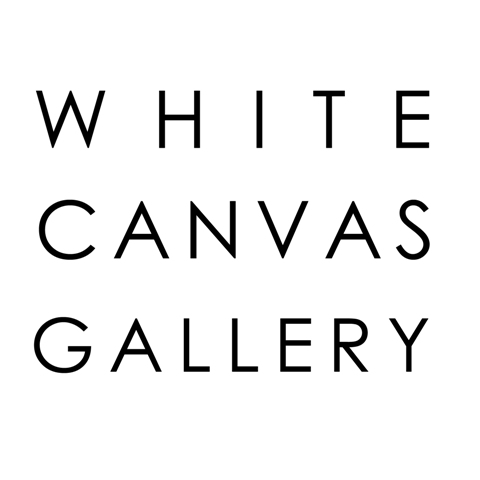
Miel is a Senior Executive Artist with The Straits Times. His works are syndicated by the New York Times Syndicate (NYTS) and have seen print in publications such as the International Herald Tribune, The Washington Post, Newsweek, Japan Times, The Australian, The Guardian and Asiaweek. He received the prestigious Reuben Division Award for Newspaper Illustration from the National Cartoonists' Society (NCS) in the US (2001) and The Society of Publishers in Asia(SOPA) Award for Editorial Excellence in Editorial Cartooning (2007). He has a Master's Degree in Design (MDes) from the UNSW. He currently has a mural at the National Museum Of Singapore.
Miel was looped in by Paul and Tia into the Tiong Bahru Sketches Exhibit midway into the preparation process, and we are so grateful they did. Miel's works are silent yet powerful. Mostly relying on line and form than on color, his works such as Back Lanereflect only the barest essentials to depict the subject.
Miel. Backlane. 2010. pen, ink and wash on paper. 36 x 26 cm.
Here are some words from Miel about his art:
You are a multi-awarded cartoonist. How different is cartooning from sketching?
As in all Art, the ideation process is pretty much the same, we start by sketching. Sketching is exploration. Sketching is adding in. Sketching is also about elimination.
Sketching is the first step in the birthing of an idea. Sketching mimics the evolutionary process-- from ape to man-- from squiggly prototypes of an idea to robust incarnations of it. Sketching is also about reinterpretation.
As in all Art, the ideation process is pretty much the same, we start by sketching. Sketching is exploration. Sketching is adding in. Sketching is also about elimination.
Sketching is the first step in the birthing of an idea. Sketching mimics the evolutionary process-- from ape to man-- from squiggly prototypes of an idea to robust incarnations of it. Sketching is also about reinterpretation.
For this show, it is more about getting intimate with the architecture of the old Tiong Bahru Estate. It was not about sketching a facade of a building per se, but we were
sketching it to make sense of its history, too. We were also making sense of its utilitarian characteristics- ergo, it is home, it is work, it is play.
I noticed that you like clean lines in your sketches. Is it a deliberate attempt when you sketching to keep everything to the essential, minimal lines?
I wanted to be exacting- if i could "finetune" the sketch in my mind's eye and do away with the extra lines that defines a "true" sketch, then half the work would have been done, in that sense. Maybe it was the sun, too. Too much sun somehow melts the shadows in and around
buildings, people, objects...
What do you like most about sketching?
Sketching is innately liberating. Sketching in the open is a humbling experience. The Aunties and the Uncles are the harshest critics around-- their comments are always truthful, unsullied by academia. That's why i love them.
You are also a painter. Do you still paint or do you intend to have a painting exhibition soon?
I am actually preparing for a two-man show next year. So, these sketching sessions and other art-related activities i am currently involved in are delightful digressions towards that aim.
As an artist, what subjects interest you the most?
sketching it to make sense of its history, too. We were also making sense of its utilitarian characteristics- ergo, it is home, it is work, it is play.
I noticed that you like clean lines in your sketches. Is it a deliberate attempt when you sketching to keep everything to the essential, minimal lines?
I wanted to be exacting- if i could "finetune" the sketch in my mind's eye and do away with the extra lines that defines a "true" sketch, then half the work would have been done, in that sense. Maybe it was the sun, too. Too much sun somehow melts the shadows in and around
buildings, people, objects...
What do you like most about sketching?
Sketching is innately liberating. Sketching in the open is a humbling experience. The Aunties and the Uncles are the harshest critics around-- their comments are always truthful, unsullied by academia. That's why i love them.
You are also a painter. Do you still paint or do you intend to have a painting exhibition soon?
I am actually preparing for a two-man show next year. So, these sketching sessions and other art-related activities i am currently involved in are delightful digressions towards that aim.
As an artist, what subjects interest you the most?
My subjects vary but my approach is definitely surrealistic. My imagery is dreamlike. I am really trying hard to escape the cliches that has been largely comforting for me to communicate IN. My paintings, rather, the studies that i have been doing right now borrows largely from religious iconography-- it is about rediscovering the esoteric codification these images accord or what essays forth from them, if we discount the obvious. There's a lot of recalibrating of my understanding of the stories behind these images and how i could
transpose them vis-a-vis current social conditions, etc. Somehow, that is the thesis for my forthcoming exhibition next year.
transpose them vis-a-vis current social conditions, etc. Somehow, that is the thesis for my forthcoming exhibition next year.
Catch more of Miel's sketches at White Canvas Gallery. Everyone is invited to the opening on June 30, 7pm! Learn more about the architecture of Tiong Bahru from Architects Kelvin Ang and Wai Fong Lee right after the opening. Listen to Miel, Tia, Paul and Don talk about their art on July 3, 2pm. Or better yet, join them in a sketchwalk on July 17, 2pm.
See you all there!


No comments:
Post a Comment